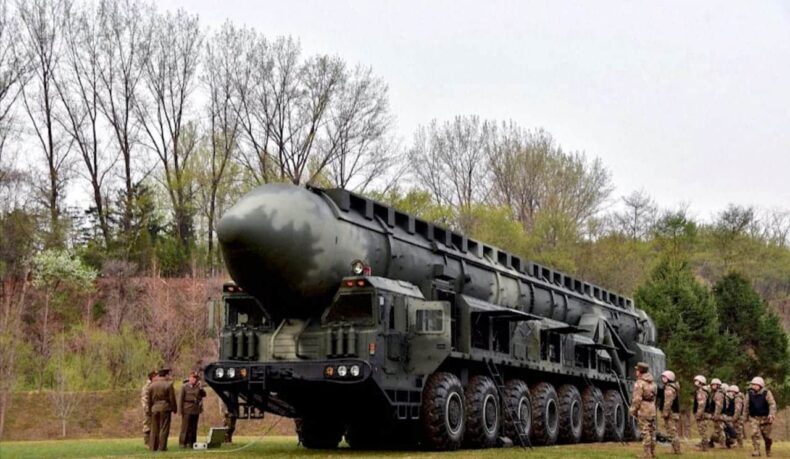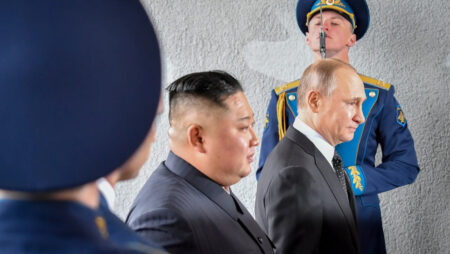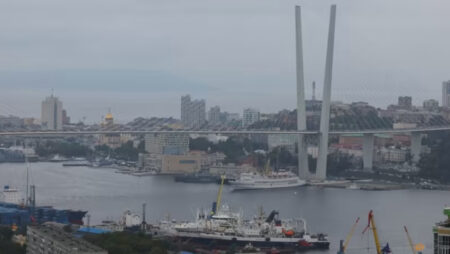State media reported on Friday that North Korea said it had tested a new solid-fuel intercontinental ballistic missile (ICBM) called the Hwasong-18
North Korea launched what appeared to be a brand-new ballistic missile on Thursday. This caused a scare in northern Japan, where residents of Hokkaido were told to take cover, but there was ultimately no threat. This was held in order to “radically promote” the nation’s ability to launch nuclear counterattacks, warning of “extreme uneasiness and horror” to enemies.

The news source added that the test launch’s objectives included determining the military potency of the new strategic weapons system as well as the efficacy of the strong-power solid-fuel multi-stage engines, stage separation technology, and reliability of the control systems with various functions.
North Korea’s intensions and purpose to launch a new type of ICBM
According to KCNA, which used the initials of the DPRK’s official name, the development of the new-type ICBM Hwasongpho-18 will fundamentally alter the strategic deterrence elements of the country, dramatically increase the effectiveness of its nuclear counterattack posture, and change the viability of its offensive military strategy.
According to analysts, it would be the North’s first attempt to use solid propellants in an intercontinental or intermediate-range ballistic missile. Long considered a top priority for North Korea, the development of a solid-fuel ICBM could speed up the North’s missile deployment in the event of war.

The test was directed by the leader Kim Jong Un, who warned that it would cause enemies to “experience a clearer security crisis” and constantly strike them with extreme fear and dread by taking lethal and offensive countermeasures until they give up their foolish thinking and reckless behavior.
According to analysts, it would be the North’s first attempt to use solid propellants in an intercontinental or intermediate-range ballistic missile. Long considered a top priority for North Korea, the development of a solid-fuel ICBM could speed up the North’s missile deployment in the event of war.
North Korea has increased its weapons testing in recent months after criticizing recent joint military drills between the United States and South Korea as escalating tensions.
The advantages of the solid-fuel ICBM over the indigenous ballistic missiles
Using solid propellants in an intermediate-range or intercontinental ballistic missile is a first for North Korea. Liquid fuel is used in the majority of Pyongyang’s largest ballistic missiles, which is a labor-intensive process.
According to Vann Van Diepen, a former U.S. government weapons expert who now collaborates on the 38 North project, solids are safer and easier for troops to use in the field and possess a substantially smaller logistical train making field-deployed solid missile units harder to detect than liquids. Van Diepen added that even liquids are highly resilient when deployed in the field, but that it also depends on how Pyongyang chooses to use the equipment.

Following a test of a high-thrust solid-fuel engine in December, North Korea demonstrated what might have been a brand-new solid-fuel ICBM in a military parade in February. According to analysts, the United States would be able to distinguish between a launch powered by solid or liquid fuel using early warning satellites that can spot variations in the infrared data produced by various missile types.
The most recent launch came days shortly after Kim called for increasing war deterrence in a “more practical and offensive” way to counter what North Korea called American aggression. Officials stated that the missile, which was launched from close to Pyongyang, traveled about 1,000 km before reaching the waters east of North Korea. North Korea also claimed that it doesn’t pose any harm to its neighbors from the test.













